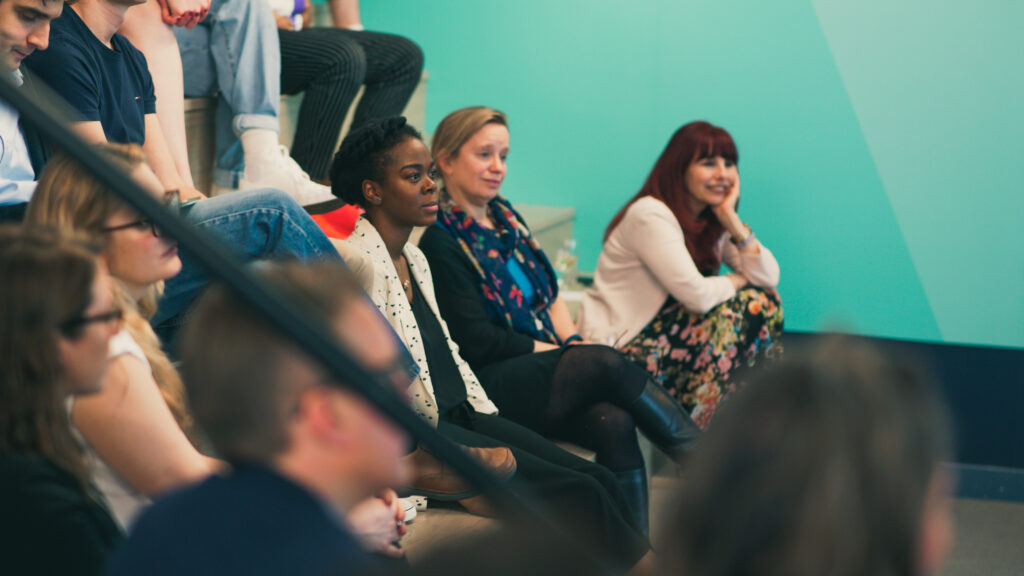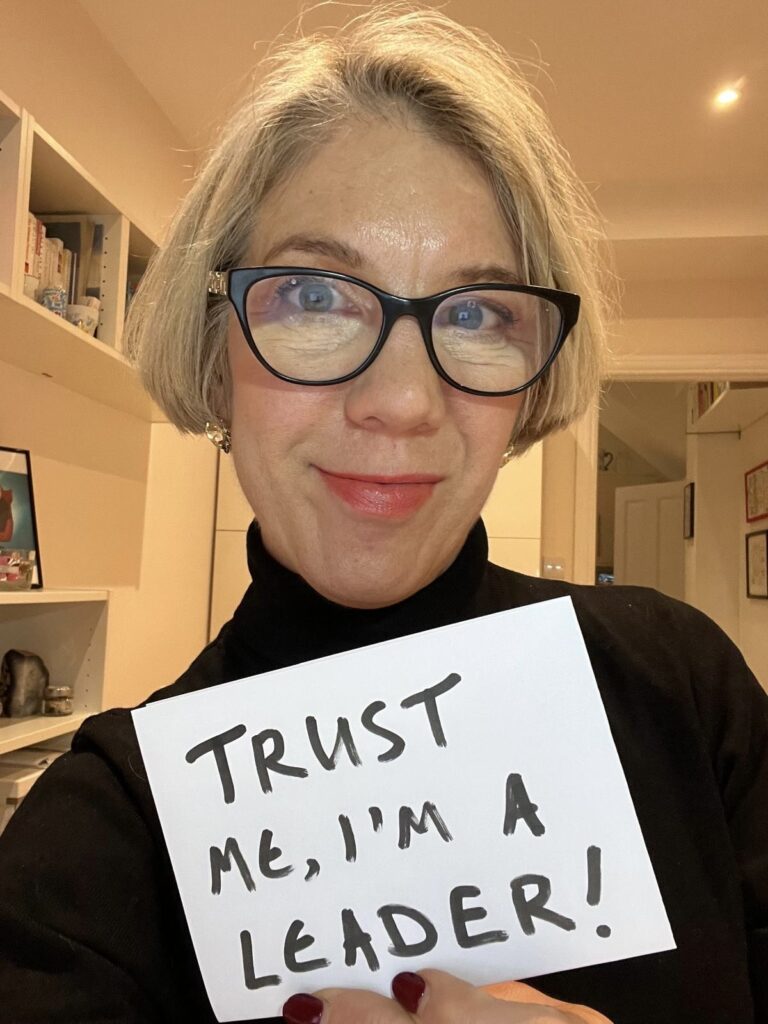
In my work with senior leadership teams, I’ve often seen how trust — or a lack of it — can make or break a team’s effectiveness. And how hard it can be, in a fast-paced, hybrid environment, where every interaction is a transaction, to do the human things that build real trust.
This article explores why trust is so important, how it links to gravitas, and practical actions you can take to build trust in your organisation.
Why trust is so important
Within an organisation, trust underpins collaboration, boosts creativity and builds resilience. Externally, it secures stakeholder confidence and protects reputations. Trust isn’t just a ‘nice-to-have’. It’s essential.
Yet, according to Edelman’s just-published 2025 Trust Barometer public trust in institutions has hit an all-time low. People aren’t happy, or in Edelman’s words, they’re ‘aggrieved’, and they’re not afraid to show it.
For organisations and leaders, this presents an opportunity: to create real, authentic trust in the workplace, and communicate it to the outside world. But how?
Inspired by the Edelman report, I ran a poll on LinkedIn, asking what people thought was the biggest factor in building trust as a leadership team, with the idea being that if you get trust right at the top, these behaviours will be more likely to filter down through the rest of the organisation.
Here are the results:
- Consistency and reliability 38%
- Listening and empathy 33%
- Vulnerability and openness 15%
- Gravitas and authenticity 13%
The poll led to some interesting discussions. Here are some snippets:
“I voted Gravitas but actually leaders require all of the above to be a GREAT leader.” Lorraine Thomas
“I’ve always found that openness breeds trust and camaraderie in our team. Being transparent about goals and challenges gets us all on the same page and pulling in the same direction.” Owen Williams
“Being consistent and reliable is the foundation of trust for me. All else further cements it. Barbara Cação
So, what’s trust got to do with high-performing teams?
You can tell when you’re part of a high-performing team, and you know when you see one in action, but it can be hard to pinpoint exactly what that team is doing that sets them apart from the rest.
Throughout my career, I’ve been fortunate enough to be part of some pretty amazing leadership teams. During my PR days, we worked alongside each other, often for long, long hours, and although we had our fair share of dramas, we usually had each other’s backs and came out stronger as a result. As a result, the trust was there. We didn’t have to label it, we just knew.
You also recognise when trust isn’t present. For example, have you ever worked in an organisation where the management team don’t trust each other? Or one which operates in silos, where departments don’t talk to each other? So many of my clients report that ongoing organisational changes, which are meant to make business work better, simply create more division, red tape and backside covering.
This doesn’t necessarily make it a toxic environment. There’s nothing deeply wrong. But if you don’t take action to build trust, it won’t develop by itself, and the business won’t reach its potential.
Even in organisations where trust is baked into the culture, it can be elusive, with discussions about trust being met with cynicism, scepticism and disillusionment from those who are aggrieved.
Because, and trust me on this (😉), it’s not enough to talk about it. It’s not enough to say, ‘you can trust me’! There needs to be something more.
The strategic approach to building high performing teams
If you want to build and even accelerate trust as a route to forging high performing teams, the good news is that there’s a wealth of insight readily available for you.
You might be familiar with Bruce Tuckman’s model: Stages of Team Development. Note that ‘trust’ is key once a team gets to the ‘performing’ stage.
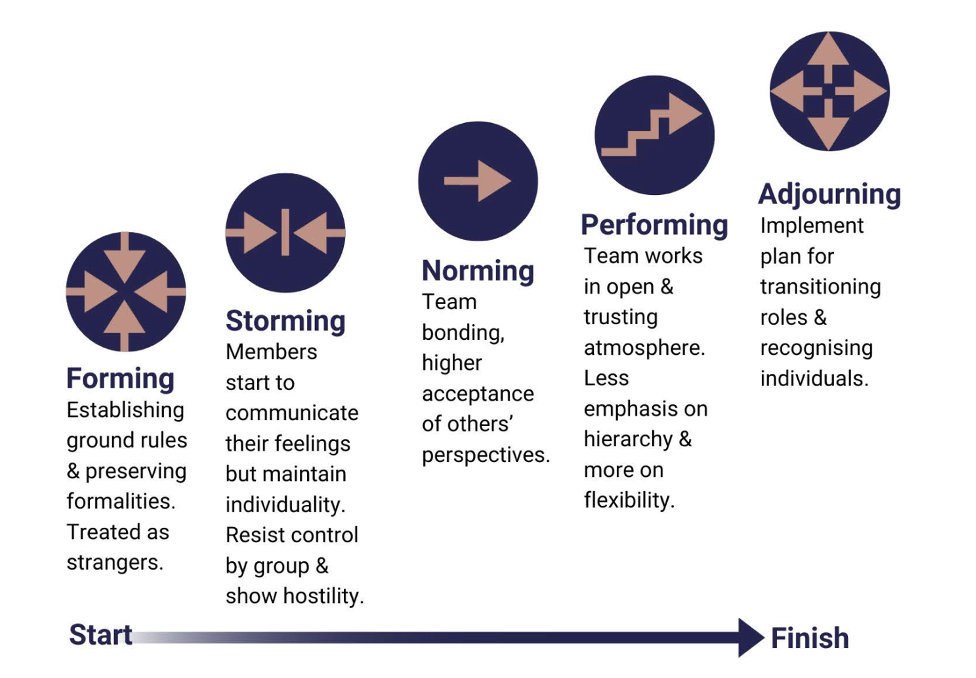
Trust comes with an element of vulnerability, which can feel particularly risky. Leaders worry about appearing weak or losing credibility. But the irony is, vulnerability builds credibility. When a leader is willing to say, “I don’t have all the answers,” it gives others permission to do the same, creating a foundation for deeper collaboration.
In Patrick Lencioni’s framework Five Behaviours of a Cohesive Team, trust is the basis of the pyramid. Without it, teams struggle to collaborate effectively, engage in constructive conflict, or commit to shared goals
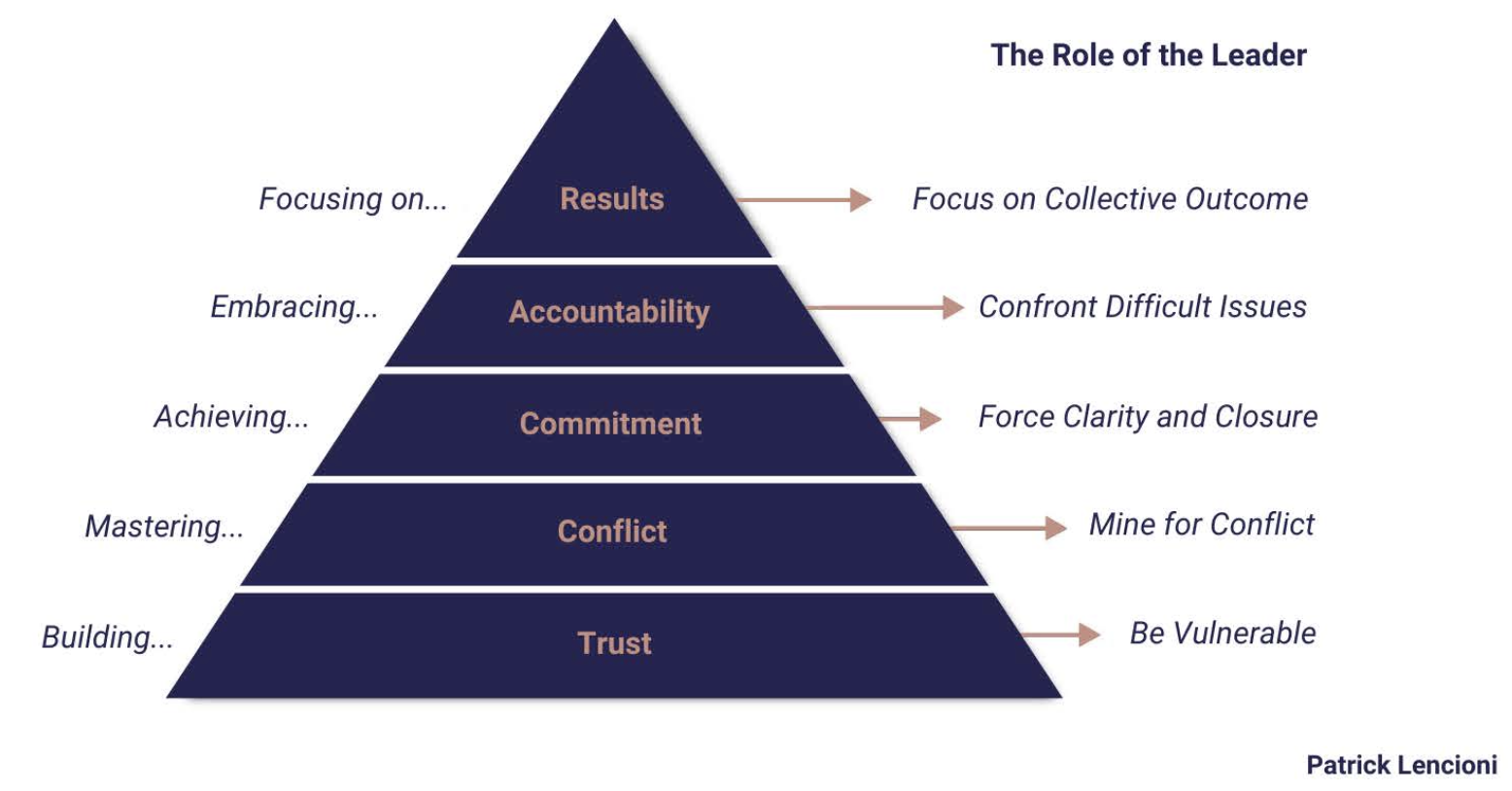
Vulnerability-based trust happens in an environment of psychological safety, when team members openly share weaknesses, rely on each other, admit to their mistakes, ask for help, and share honest feedback. This openness fosters deeper connections and creates a foundation for high performance.
Charles H. Green’s Trust Equation furthers this understanding. His model breaks trust into four components:
- Credibility (your words)
- Reliability (your actions)
- Intimacy (the safety others feel in confiding in you)
- Self-orientation (the degree to which you focus on others rather than yourself)
Leaders who excel on these dimensions inspire confidence and loyalty.
What’s the link between trust and gravitas?
In my book, Leading with Gravitas, I explore how trust and gravitas go hand in hand. Gravitas (my definition) is the ability to command respect and get your voice heard — and it becomes a driving force when it’s rooted in authenticity. Leaders who embrace their true selves inspire confidence and cultivate trust.
Gravitas is a key ingredient of high performing teams, but it needs to be built on solid foundations including a shared vision, defined values and trust. This is an ongoing process, and the best teams come together regularly to work on this together.
At the heart of my Gravitas framework lies authenticity — a critical driver of trust. Gravitas is often misunderstood as mere authority or charisma. In reality, it’s the combination of confidence, communication and credibility that makes leaders compelling and trustworthy. Authenticity is the thread that ties these elements together; without it, gravitas falls flat.
When I’m coaching leaders, I often ask: “Are you showing up as the same person in the boardroom as you are outside it?” Authenticity is about aligning who you are with how you lead. It’s not about being perfect — it’s about being real.
Leaders who project gravitas demonstrate:
- Self-awareness: Understanding their strengths, weaknesses, and values.
- Resonance: Communicating in a way that connects with others’ emotions and needs.
- Credibility: Aligning their words with actions.
These traits resonate deeply with Green’s and Lencioni’s principles, emphasising that trust grows from genuine, values-driven leadership.
Five actions to build trust as a leadership team
- Cultivate vulnerability
Lead by example. Share your own challenges and lessons learned to signal that it’s safe for others to do the same. Vulnerability creates the foundation for open dialogue and shared understanding. When I share personal stories of failure in workshops, I’m often met with a ripple effect. It opens the door for others to speak honestly.
- Prioritise consistency
Trust thrives on reliability. Ensure your actions align with your words, and follow through on commitments. Over time, this consistency reinforces your credibility. I often say to leaders: “It’s not about what you promise, it’s about what you deliver”.
- Embrace constructive conflict
Foster an environment where healthy disagreements are encouraged. Use tools like Lencioni’s framework to ensure conflicts focus on ideas rather than personalities, building trust through shared problem-solving. When teams I work with learn to have robust yet respectful debates, they unlock creativity and innovation.
- Focus on listening and empathy
Demonstrate intimacy by truly listening to your team. Make people feel heard and understood, and approach their concerns with empathy. This builds deeper connections and mutual respect. I’ve seen transformational change when leaders practice active listening. It’s a simple shift, but incredibly powerful.
- Develop shared goals and accountability
Establish a clear vision and shared objectives. Encourage accountability, not just at the individual level, but as a team. Knowing everyone is aligned builds a sense of shared purpose and mutual trust. When teams I’ve worked with take the time to co-create their goals, it shifts the dynamic from “me” to “we”.
Case study: Building excellence in high-performing teams
I had the privilege to work with the ExCom team at the Excelsior Hotel Gallia, a Luxury Collection Hotel in Milan.
We started by exploring the key ingredients that inspire a team to achieve excellence, which brought some fresh thinking to the group and highlighted the importance of trust.
Crucially, over two days with accompanying coaching, we created an environment where everyone felt comfortable opening up.
There were some incredibly powerful moments which really shifted the needle. Key was appreciating the phenomenal advances that can happen through a clearly defined vision. One that goes deeper than numbers and words and taps into what people really care about.
Just as in 5-star luxury hotels, it’s often the attention to detail and the little things that make the biggest difference, so too with high-performing teams.
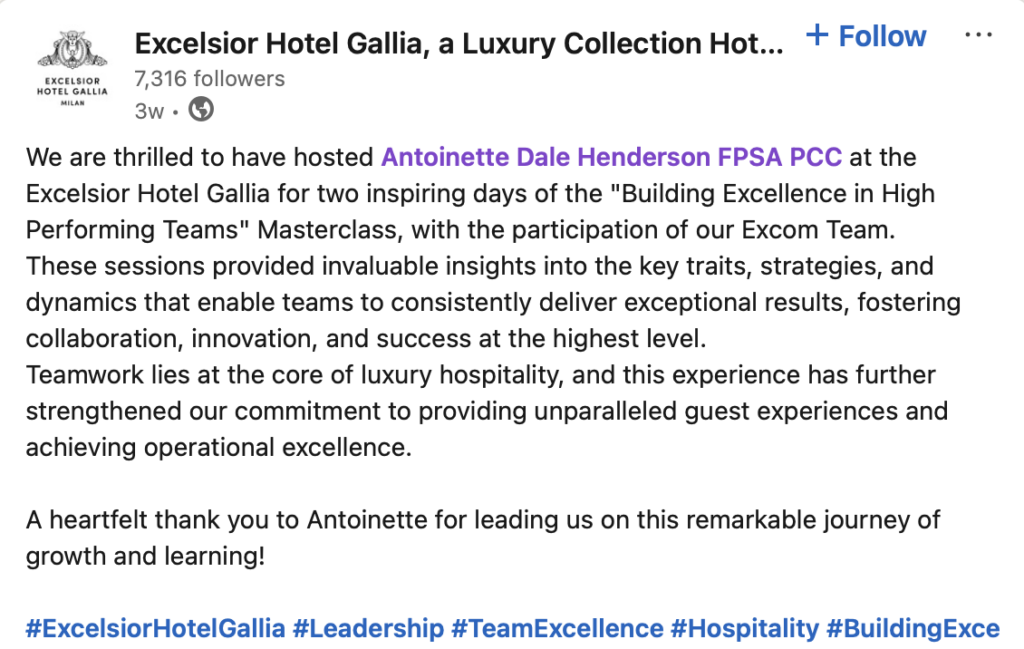
Final thoughts
In a world where trust is fragile, leaders must take deliberate steps to strengthen it. By embracing vulnerability, practicing authenticity, and applying the principles of gravitas, senior teams can create a culture where trust becomes the norm, not the exception.
The question isn’t whether trust is essential. The question is: what are you doing today to build it? Let’s make it a priority to lead with gravitas and foster environments where trust can truly thrive.
Ask about my masterclass Building Excellence in High-Performing Teams. From fostering trust and collaboration to leveraging individual strengths, you’ll uncover actionable insights to elevate your team’s performance to the next level.
For more on listening and empathy, take a look at Being an exceptional listener: how to talk so your team with listen, how to listen so your team will talk.

About the author
Antoinette Dale Henderson is a leadership coach, speaker, and author specialising in executive presence and gravitas. With over 25 years in communications, she empowers leaders to increase their influence and impact through her Gravitas Programme and best-selling books, Leading with Gravitas and Power Up.

